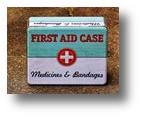Safety During Interactions
Nothing is a higher priority during an interaction than safety.
Everyone’s safety is of the utmost importance but the most important person to keep safe is you! If your safety is compromised you may require, and no longer be offering, an intervention.
Your second priority is your partner, to whom you offer protection and support. The strength, quality, and success of an interaction may depend on the strength of the couple, protect each other. Finally the safety of all involved, especially the most vulnerable like children. All of these should have some of your attention and priority.
If a person feels abused or in danger, then they are, whether you perceive the threat or not. Your goal in the interaction is to help them to feel out of danger or not abused. This includes physical safety as well as emotional, socio-political, or any other way that makes them feel vulnerable.
Each person has the right to safety , the first of the five interpersonal rights in this text, the right to not be abused or in danger. The obligation that goes with this right is to not be abusive or dangerous to anyone else.
Physical Safety
How do you stay physically safe during a hostile interaction?
The first issue is safe distance. Two arms lengths away from the other person is considered safe because you have time to run if you are egressed upon.
We interact inside this safe circle. It is important to recognize when you are closer so you may react more quickly. The greater the threat you feel the more important to keep this distance.
Rehearse the use of emergency protocols in your mind until they feel clear and automatic. This will increase the chance that you will actually use them at the right moment.
Remember its hard to think clearly when lives are threatened so it helps to develop strong habits for these. That takes practice and repetition.

